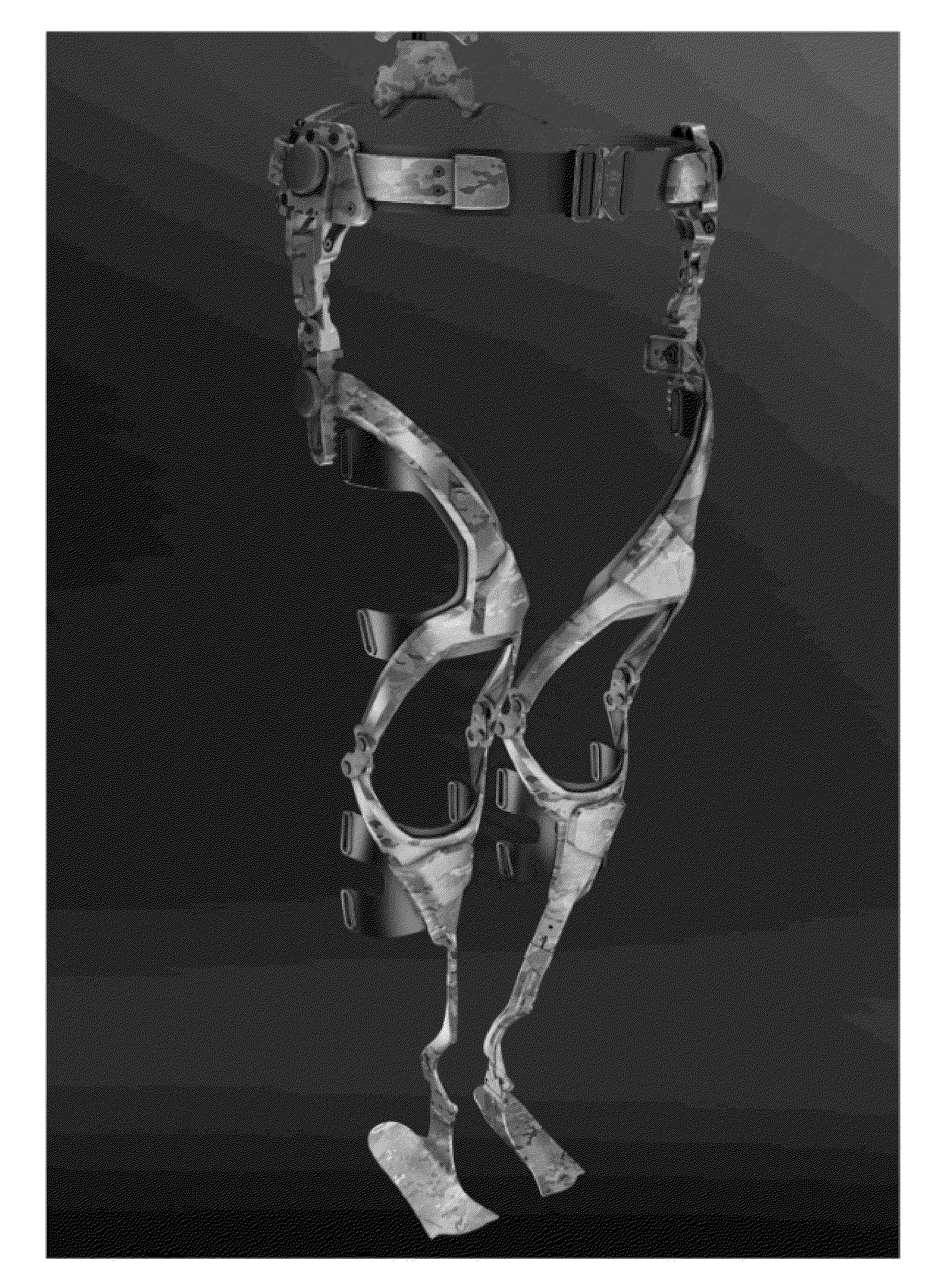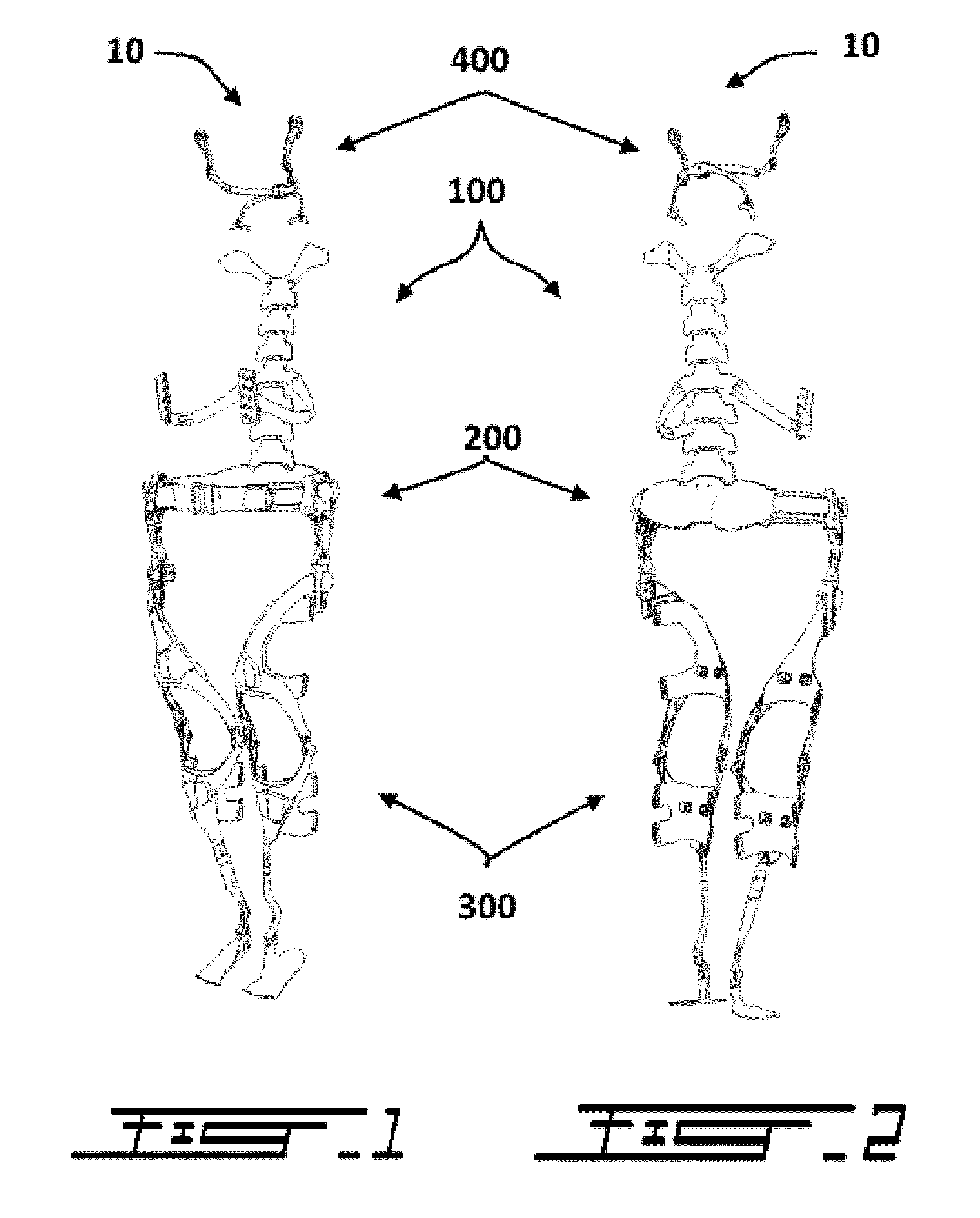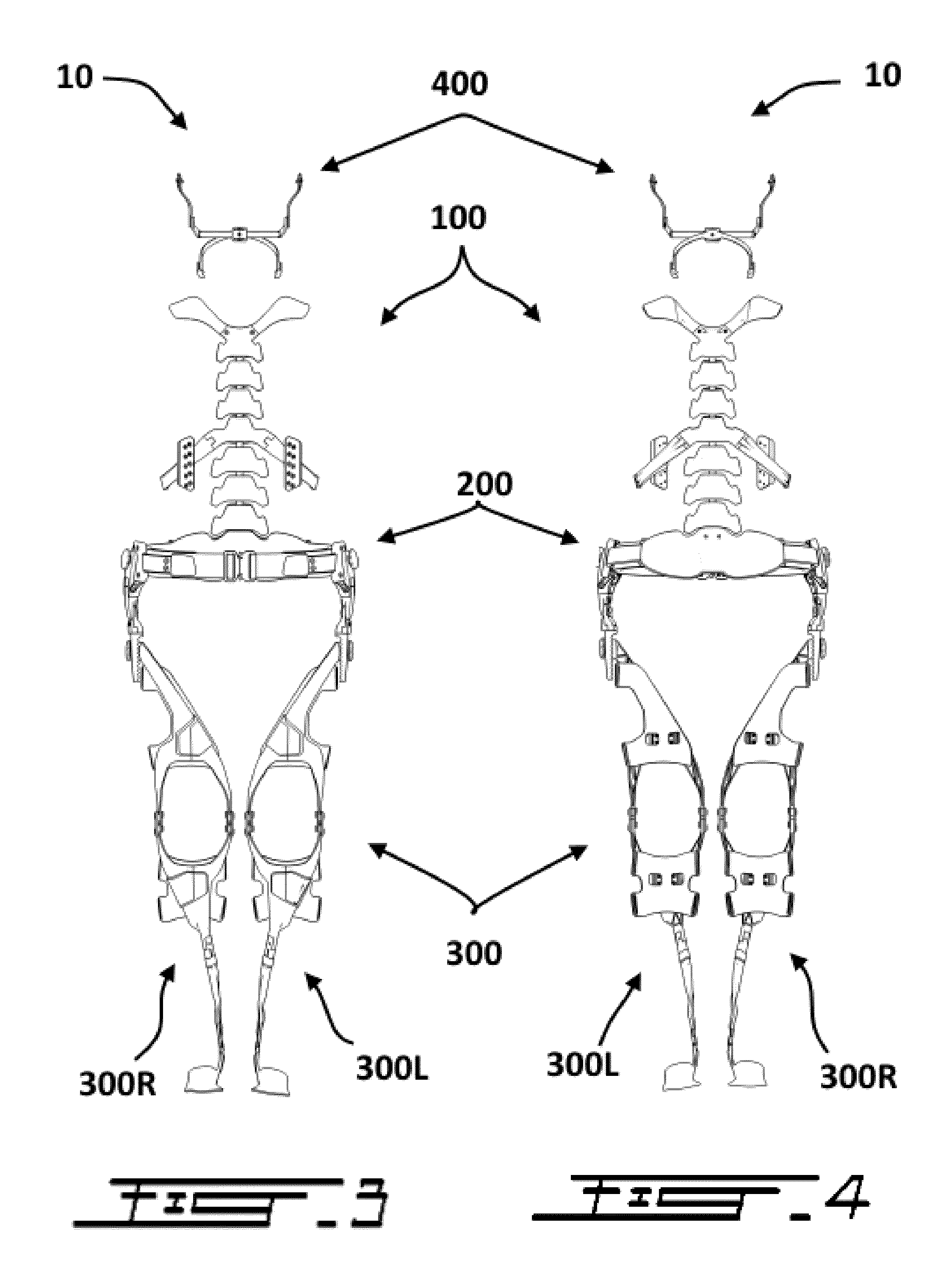Exoskeleton and method of using the same
a technology of exoskeleton and wearable structure, which is applied in the field of exoskeleton and other wearable structures, can solve the problems of not allowing for flexibility of legs, and often carrying heavy loads, and achieves the effect of reducing the support of load
- Summary
- Abstract
- Description
- Claims
- Application Information
AI Technical Summary
Benefits of technology
Problems solved by technology
Method used
Image
Examples
Embodiment Construction
[0051]A novel load carriage exoskeleton will be described hereinafter. Although the invention is described in terms of specific illustrative embodiments, it is to be understood that the embodiments described herein are by way of example only and that the scope of the invention is not intended to be limited thereby.
[0052]An exoskeleton in accordance with the principles of the present invention generally comprises at least three interconnected sections, 1) a torso section, 2) a hip section, and 3) leg sections. These three sections are interconnected such as to transfer the load normally carried by the torso, including the shoulders, chest, and back of the user, down to the ground via the hip section and then the leg sections.
[0053]To allow a load transfer which is more aligned with human biomechanics, the leg sections of the exoskeleton are generally connected to the sides of the hip section but are configured to transfer the load on the inner side of the feet.
[0054]In typical embodi...
PUM
 Login to View More
Login to View More Abstract
Description
Claims
Application Information
 Login to View More
Login to View More - R&D
- Intellectual Property
- Life Sciences
- Materials
- Tech Scout
- Unparalleled Data Quality
- Higher Quality Content
- 60% Fewer Hallucinations
Browse by: Latest US Patents, China's latest patents, Technical Efficacy Thesaurus, Application Domain, Technology Topic, Popular Technical Reports.
© 2025 PatSnap. All rights reserved.Legal|Privacy policy|Modern Slavery Act Transparency Statement|Sitemap|About US| Contact US: help@patsnap.com



